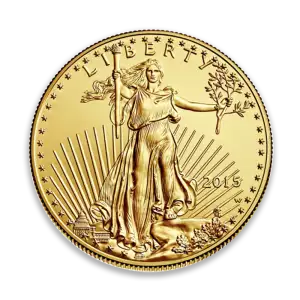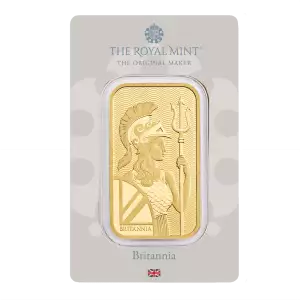- Gold Au $3233.50 $13.22
- Silver Ag $32.52 $0.06
- Platinum Pt $962.20 $1.42
- Palladium Pd $980.00 $-7.59
Spot Gold Price
Gold Spot Prices Today
Current Spot Prices
$ USD
%
Updated
Live Gold Spot Prices
View the live gold spot price per troy ounce, gram, and kilogram. You can also see the 24-hour price trend for each weight. Below, you'll find an interactive live gold price chart with historical pricing as well as various historic long term gold price charts.
Gold Spot Prices
Today
Change
Gold Price Per Ounce
$
Gold Price Per Gram
$
Gold Price Per Kilo
$
Shop Gold at Pacific Precious Metals
Date
from:
to:
Ask
$
(%)
Bid
$
Low
$
High
$
Prices in USD / ozt
We can't get the info. Try with another date or try again later.
Historical Daily Gold Prices
Date:
Price: $USD
What is the Gold Spot Price?
The gold spot price represents the current market value for one troy ounce of investment-grade .999 fine gold available for immediate delivery. This standardized benchmark fluctuates continuously throughout global trading hours, responding in real-time to market factors including international speculation, currency valuations, geopolitical developments, and macroeconomic indicators. Professional gold dealers, institutional investors, and central banks worldwide rely on this benchmark to determine accurate pricing for physical gold bullion products including sovereign gold coins, gold bars, and gold rounds.
Gold Price History: Understanding Gold's Historical Performance
Gold has maintained its status as humanity's premier store of value for over 5,000 years. In recent market history, gold established a significant benchmark when it reached approximately $1,924 per troy ounce in 2011, before breaking the psychological $2,000 barrier in 2020 during pandemic-related economic uncertainty. Throughout economic cycles, gold has consistently demonstrated its unique position as a safe-haven asset, particularly during periods of stock market volatility, currency devaluation, and inflationary pressure. Gold's price appreciation since 2000 has outpaced many traditional investment vehicles, reinforcing its role in diversified investment portfolios.
Key Factors Influencing Today's Gold Spot Price
The current gold spot price responds dynamically to these critical market factors:
- Global Supply and Demand Fundamentals – Annual gold mining production, central bank gold reserve acquisitions, industrial usage, jewelry fabrication demand, and investment demand
- US Dollar Strength and Currency Markets – Gold typically exhibits strong inverse correlation to the US Dollar Index, rising when the dollar weakens against major currencies
- Inflation Metrics and Interest Rate Policies – Gold historically strengthens during periods of elevated inflation or accommodative monetary policy with low real interest rates
- Geopolitical Tensions and Economic Uncertainty – Market volatility during global conflicts, trade disputes, or financial crises often triggers gold's safe-haven status
- Institutional and Retail Investment Allocation – Strategic portfolio shifts between equities, fixed income, and alternative assets including precious metals
- Central Bank Gold Purchasing Activities – National banks' gold acquisition programs significantly impact global gold demand and price trends
- Gold ETF and Derivatives Market Activity – Paper gold investment vehicles create additional price pressure beyond physical market dynamics
Gold Spot Price vs. Gold Futures Price
While spot gold reflects immediate delivery pricing, gold futures contracts represent agreements for gold delivery at predetermined future dates. The relationship between these prices, known as the gold forward curve, provides valuable insights into market expectations. Contango (futures priced higher than spot) or backwardation (spot priced higher than futures) conditions signal important market sentiment regarding anticipated gold price direction.
Comprehensive Gold Spot Price FAQs
What exactly does the "gold spot price" mean?
The gold spot price represents the current market rate for immediate delivery of one troy ounce (31.1035 grams) of investment-grade .999 fine gold. This standardized benchmark differs fundamentally from futures contracts, which indicate delivery commitments at specified future dates. The spot gold price serves as the universal baseline from which all physical gold products derive their intrinsic value.
Why can't you purchase physical gold exactly at the spot price?
The spot price represents the wholesale interbank exchange rate for unrefined gold bullion. Physical investment gold products include necessary additional costs including refining, assaying, minting, fabrication, distribution logistics, and authorized dealer margins. These premiums vary significantly by product category, with government-issued gold coins typically commanding higher premiums than basic gold bars due to their legal tender status, intricate security features, and sovereign guarantees of weight and purity.
Is the gold price uniform across international markets?
Yes. Gold trades globally as a dollar-denominated commodity, establishing a single world market price that is subsequently converted to local currencies for regional markets. This unified global pricing mechanism prevents significant arbitrage opportunities between geographic regions, ensuring gold maintains consistent valuation worldwide regardless of where it physically trades.
How frequently are gold spot prices updated in the market?
Gold prices update continuously during active market hours, which operate nearly 24 hours per day from Sunday evening through Friday afternoon. Price discovery occurs every few seconds based on ongoing market activity across major trading centers including New York, London, Shanghai, and Zurich. This constant price movement reflects gold's status as a highly liquid global asset class.
What creates the price differential between various gold investment products?
Gold investment options vary in premium over spot based on several factors:
- Government Gold Coins (American Gold Eagles, Canadian Gold Maple Leafs, etc.) carry premiums reflecting their legal tender status, government guarantees, and production costs
- Private Mint Gold Bars typically offer lower premiums due to simplified production processes and lower marketing costs
- Gold Rounds from private mints often represent middle-ground pricing between coins and bars
- Fractional Gold Products (1/2 oz, 1/4 oz, 1/10 oz) generally carry higher percentage premiums due to increased production costs per ounce
How does the gold spot price influence numismatic or collectible gold coins?
Collectible gold coins derive their market value from dual components: their intrinsic gold content (which moves directly with spot price) AND their numismatic premium factors (rarity, condition, historical significance, certification grade). While their base gold value fluctuates with daily spot price movements, the collector premium component may remain relatively stable regardless of underlying gold market fluctuations. During periods of gold price volatility, the numismatic premium often represents a smaller percentage of total coin value as the metal content value increases.
What is the relationship between gold prices and silver prices?
The gold-to-silver ratio represents how many ounces of silver it takes to purchase one ounce of gold. This historical relationship, currently at approximately 75:1, fluctuates based on relative supply/demand dynamics between the metals. Investors often monitor this ratio to identify potential relative value opportunities between precious metals.
Strategic Advantages of Physical Gold Investment
Physical gold ownership provides significant benefits in comprehensive portfolio management:
- Inflation Protection – Gold has historically maintained purchasing power during periods of currency devaluation and rising consumer prices
- Portfolio Diversification – Gold's low correlation to traditional financial assets provides risk-reduction benefits across market cycles
- Wealth Preservation – Physical gold represents a multi-generational store of value independent of any counterparty's financial stability
- Financial Privacy – Certain forms of physical gold ownership offer enhanced confidentiality compared to digital investments
- Crisis Insurance – Gold typically performs strongly during black swan events, financial system stress, and geopolitical crises
Gold IRA Investment Opportunities
Many Pacific Precious Metals gold products qualify for inclusion in precious metals IRA accounts, offering tax-advantaged retirement options for forward-thinking investors. Gold IRAs combine the security and tangibility of physical precious metals with the tax-deferred growth benefits of qualified retirement accounts, creating an optimal vehicle for long-term wealth preservation.
Discover Gold IRA solutions with Pacific Precious Metals' specialized retirement services →
Explore Additional Precious Metals Markets
Diversify beyond gold with our comprehensive precious metals offerings:
View Today's Live Silver Spot Price →


